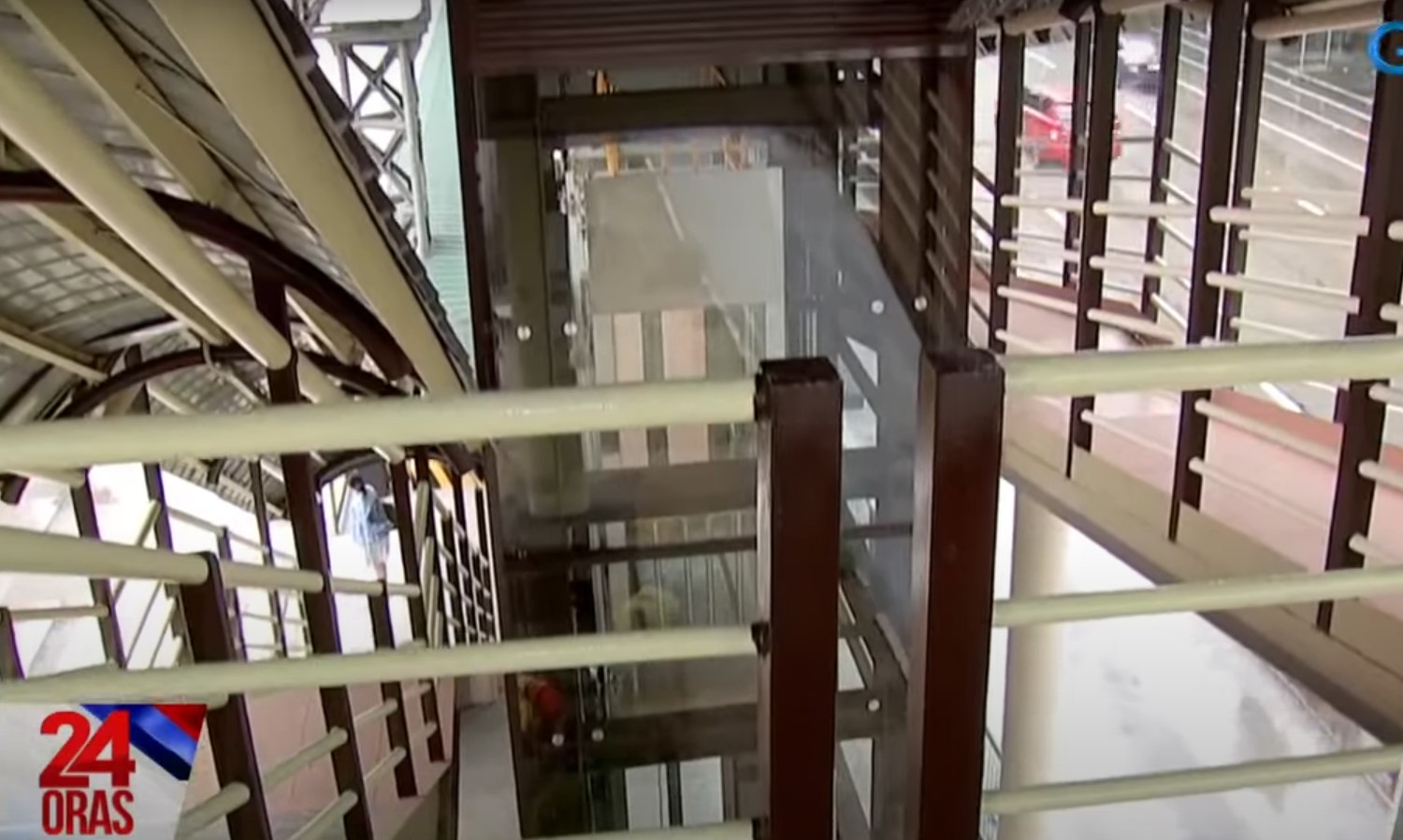MMDA personnel to help PWDs up steep EDSA Busway ramp

The Metro Manila Development Authority will make available some of its personnel to help persons with a disability who might find it difficult to use the PWD ramp at the PhilAm station of the EDSA Busway.
The MMDA issued the statement after the ramp was criticized on social media for being too steep.
"Magtatalaga ang MMDA ng mga kawani para umasiste sa mga PWDs kung mahirapan sila pumanhik ng rampa.Kumpara sa nag-viral na photo, hindi ito masyadong matarik kung lalakaran," the MMDA said in a statement.
"Inilagay ang rampa dahil sa limitadong espasyo at kung wala ito ay hindi maiilagay ang elevator sa istruktura para sa convenience ng mga commuters na sumasakay sa busway station," it added.
(The MMDA will assign personnel to assist PWDs who may find it difficult to use the ramp. Compared to the viral photo, the ramp is not too steep for walking. The ramp was installed due to limited space, and without it, the elevator could not be placed in a structure that enhances convenience for commuters using the busway station.)
The MMDA said there was a height restriction at the MRT which kept the elevator from being higher to more level with the footbridge.
"Ukol sa viral photo ng rampa sa EDSA-Philam station ng Busway station sa Quezon City, nais namin ipabatid na mayroong height restriction ang MRT na sinunod ng MMDA kaya hindi naging posible na ipantay ang elevator sa footbridge," the MMDA said in a statement.
"Hindi ito perpektong disenyo lalo na sa mga naka-wheelchair pero malaking tulong pa rin ito para sa mga senior citizens, buntis at ibang PWDs sa halip na umakyat gamit ang hagdan," it added.
(Regarding the viral photo of the ramp at the EDSA-Philam Busway station in Quezon City, we want to convey that there is a height restriction imposed by the MRT which prevented the elevator from being aligned with the footbridge. This is not a perfect design especially for wheelchair users, but it still greatly benefits senior citizens, pregnant women, and other PWDs by providing an alternative to climbing stairs.)
The ramp has also been found too steep by wheelchair users.
According to Jonathan Andal’s report on "24 Oras," the ramp was the means of access between the elevator and the footbridge.
An architect who helped craft the implementing rules and regulations of Batas Pambansa No. 344 or the Accessibility Law said the PWD ramp was ten degrees steeper than the standard.
Wheelchair user Nelson Belo, a member of the group Life Haven, tried the ramp which has been tagged in social media as dangerous for PWDs.
Belo said he could not use the ramp going up because it was too steep. It was also too dangerous for a wheelchair user to use going down.
“Kapag dumidiretso ako doon, may bakal nga, baka doon ako sumuot sa bakal,” Belo said.
(If I go straight down too fast, I might overshoot the rails.)
Even with a helper, the ramp was difficult to use.
According to the implementing rules and regulations of Batas Pambansa 344 or the Accessibility Law, PWD ramps must be inclined at a 4.8 degree angle.
Architect Armand Eustaquio, one of those who crafted the IRR of the law on access for PWDs, found out that the controversial ramp was inclined at 14.15 degrees.
“Sa case nito, mukhang 'di nila kakayanin unassisted, especially 'yung mga gumagamit ng wheelchair. Kailangan may magtutulak sa kanila otherwise medyo delikado ‘to,” Eustaquio said.
(In this case, those who use wheelchairs cannot use this unassisted. Someone should push them, otherwise this will be dangerous for them.) —NB, GMA Integrated News

Need a wellness break? Sign up for The Boost!
Stay up-to-date with the latest health and wellness reads.
Please enter a valid email address
Your email is safe with us






